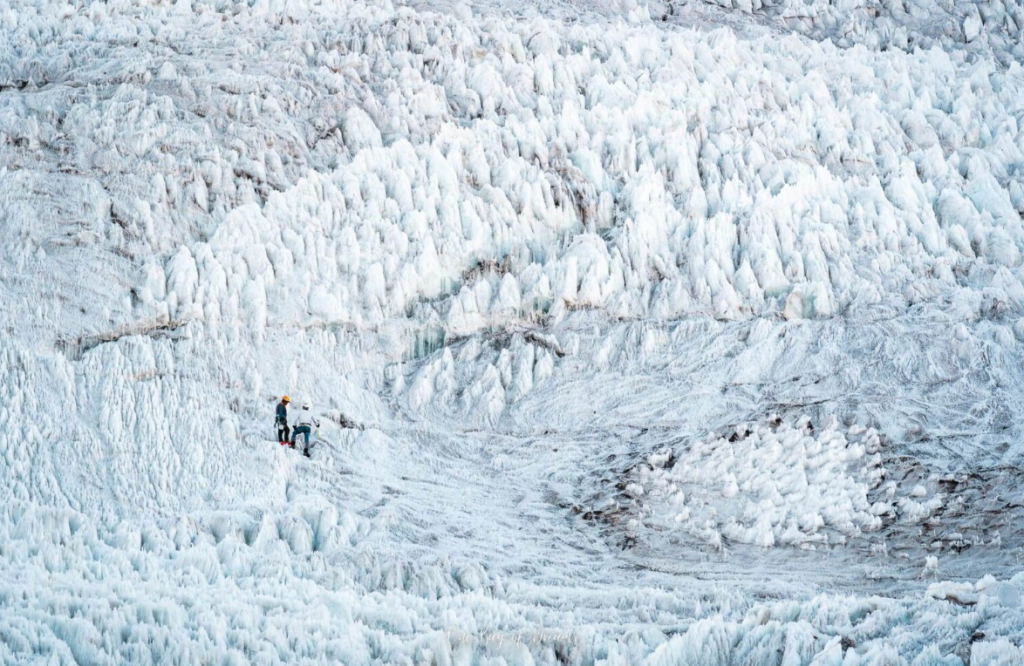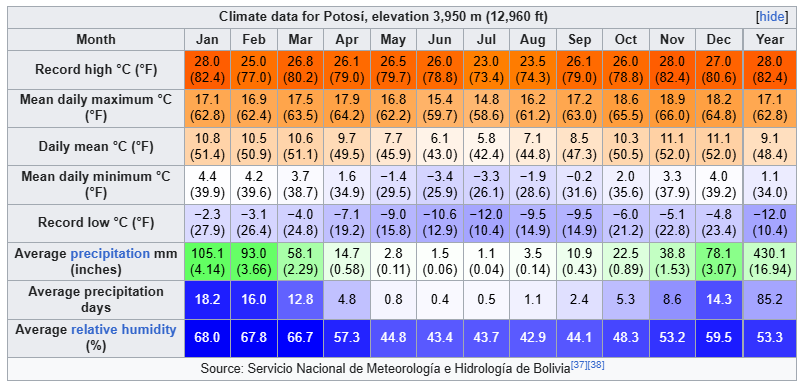
n a rare and significant meteorological event, the high-altitude city of Potosí recorded an all-time June low of −11.5 °C, setting a new temperature record for the month. Located at nearly 3,900 meters (12,800 feet) in the Bolivian Andes, Potosí is no stranger to cold, but this latest drop marks one of the coldest June nights in its recorded history.
📉 Breaking a Chilly Legacy
Prior to this event, the lowest June temperatures in Potosí hovered between −9.5 °C and −11.0 °C, based on climatological records going back several decades. Although precise historical data can vary depending on station relocation and instrumentation, the previous unofficial June low was estimated at around −11.0 °C, recorded in the 1980s. In nearby highland locations, such as El Alto or Oruro, June temperatures have occasionally dropped below −12 °C, but Potosí’s thin, dry air and clear skies make it uniquely vulnerable to radiational cooling.
The new record of −11.5 °C, officially logged in the early hours of June 24, 2025, was verified by Bolivia’s national meteorological service SENAMHI and confirmed by independent observers. It now becomes the lowest confirmed June temperature for Potosí since modern record-keeping began.
🌡️ How Does This Compare Nationally?
Bolivia’s absolute national cold record was set in Uyuni in July 2002, where temperatures plummeted to −18.6 °C. In La Paz, lows have dipped to −14.9 °C, notably during the May 2023 freeze event. Although Potosí’s new June record doesn’t rival those in absolute terms, it is exceptional for its timing—early in the austral winter—and for occurring in a region typically not associated with Bolivia’s deepest freezes.
❄️ Conditions Behind the Record
This cold wave was driven by a combination of clear skies, dry air, and persistent high pressure, which promoted strong overnight heat loss. June in Bolivia is typically part of the dry season, characterized by minimal cloud cover and low humidity, creating ideal conditions for deep nocturnal cooling.
🚨 Impacts and Outlook
No structural damage or casualties were reported, but rural agricultural communities around Potosí have expressed concern. Sub-zero events this intense can damage frost-sensitive crops, freeze irrigation systems, and cause hypothermia in livestock if unprotected.
Authorities are now encouraging preparedness in highland regions, where similar conditions could persist into July. The new record has also sparked discussion among scientists monitoring climate variability in the Andes, where both cold extremes and heat spikes are becoming more pronounced in recent decades.
Conclusion:
Potosí’s −11.5 °C serves as a stark reminder of the extremes the Andean climate can produce—even in regions well-acclimated to winter cold. As weather records continue to be broken across South America, events like this one highlight the urgency of resilient infrastructure, early-warning systems, and localized climate adaptation

Illustration picture: https://www.onebagofdreams.com/insider-tips/how-to-summit-huayna-potosi-in-bolivia/

Source: https://en.wikipedia.org/wiki/Potos%C3%AD


























